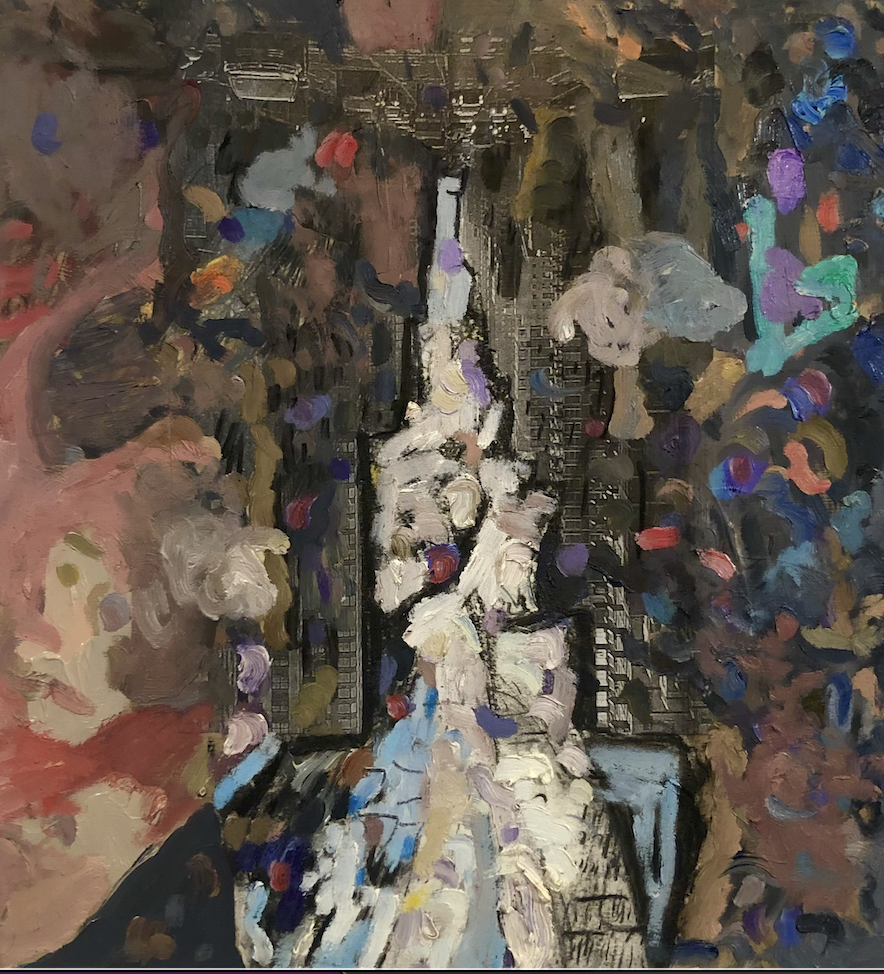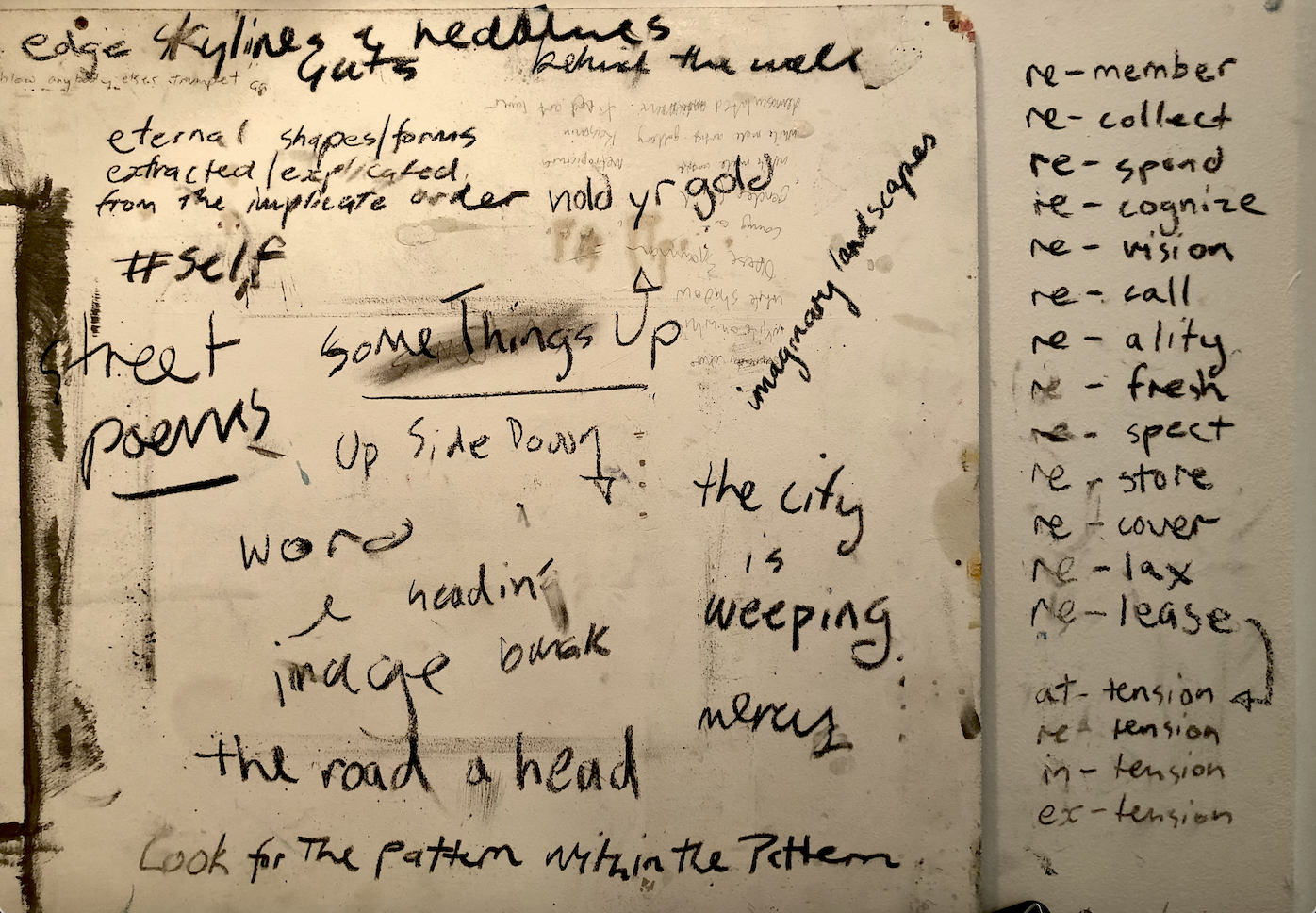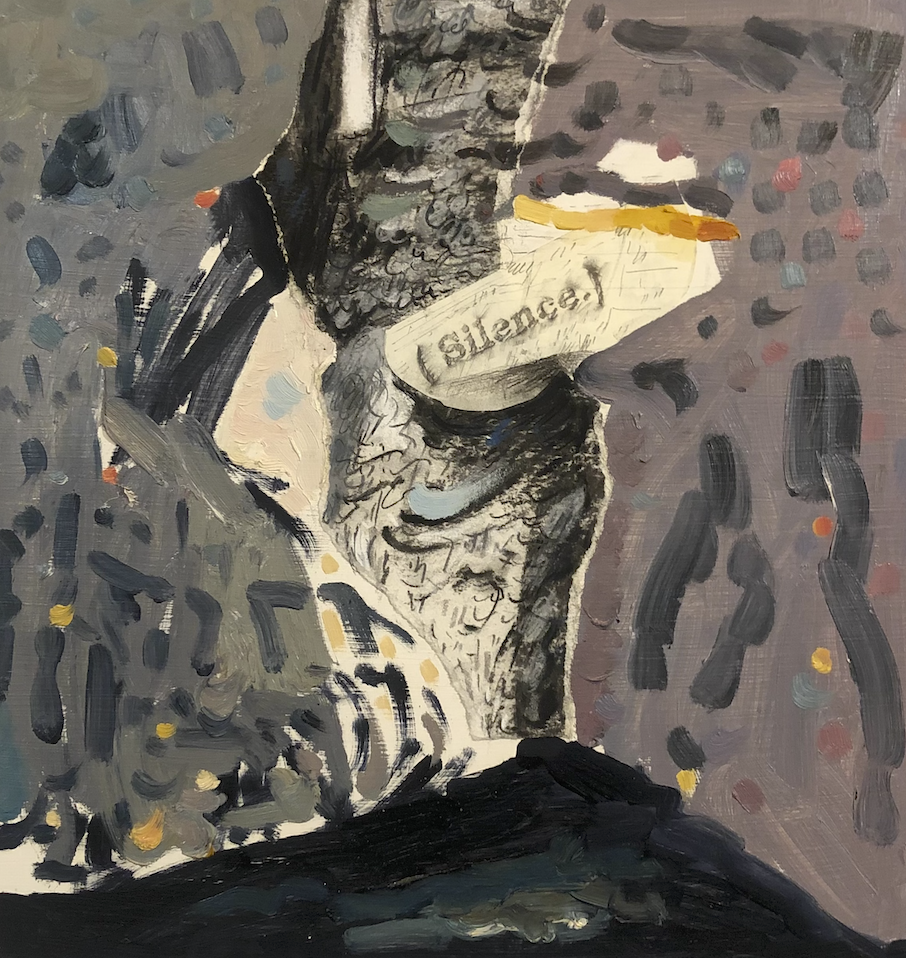Ben Ponté Teaches the Restorative Potential of Drawing


Ben Ponte’s online experience, Drawn from Within, invites guests of all ages and backgrounds to explore, from within their own homes or places of sanctuary, the experiential aspects of drawing and its significance in this time of self-distancing and social isolation. The art class, or workshop rather, has become especially popular with teams from corporate tech titans like TikTok, Facebook, Adobe, and Linkedin, but also other companies including Nike. As one foundational principle is participants exploring their own imagination, it is understandable that companies see it as potential. His long-time interests in the relationship of the observer and the observed and his mantra of letting the image speak have worked their way to the core of the experiences and more importantly, in these difficult times, his experiences explore the restorative potential of the creative process.
I went to his studio and sat down for a conversation about the ideas that helped shape his online experience.
David van Leeuwen: It has been said that there is no time or place that is inopportune. That being said, these times have been trying on us all. If you saw opportunity in these times, what opportunities did you see, and how did that lead to Drawn from Within?
Ben Ponté: It is such a strange thing to think of what comes first. ‘Opportunity’ is this idea that you see something in the moment, take a chance, and roll with it. But this feels like it was something I have been exploring for a long time and the circumstances just evolved to allow that to come out in this moment through a medium (Zoom meetings) that was underutilized. There is something about the connection from the interior spaces that we have been spending so much time in, to the exterior and to each other, through this medium, that allowed these ideas that I have been exploring for a long time, to just find a place. So, it was not so much a question of capitalizing on an opportunity, but just of finding a way to make sense of it in relation to my own work and study, with regard to interior/exterior space.

DvL: I know that the Indian philsopher Krishnamurti’s interest in the observer and the observed has also been an interest of yours. How has this influenced your work as a visual artist and how has it found its way into the experiences?
BP: I think that one of Krishnamurti’s key insights is that ‘the observer is the observed’. It sounds so simple but it has so many implications, and from my understanding what he was talking about was basically that whatever we observe we are going to influence the observation, so much so that you cannot separate the two, the observer from the observed. It is much more elaborate and subtle, but he put it into such simple and direct language, that when I heard it, it made sense to me in relation to my own life and my own art practice and drawing. Inevitability, even though you may be making a drawing of something ‘out there’, the drawing is always a materialization of that relationship between the seer and the seen. So you are not drawing ‘the thing’, the object, you are drawing the relationship. In that sense, I don’t know who said it, everything is a self-portrait.
So, I developed a series of really simple drawing exercises that allow people to explore that dynamic. Despite all that happened in 20th century art, people often still think of drawing as depicting what you see. But when you shift that emphasis towards exploring the dynamic between who you are and what you see, drawing becomes a form of self-reflection, less about the outcome and more involved in the process.
DvL: And what is the relationship between the images we see and the self?
BP: I think of drawing as embodied vision. What happens in a way, I cannot validate this scientifically, but from an experiential point of view, when you are drawing you take the world in through your senses, and then you translate that vision into your body, hand and down onto the page. What you are left with is a relic of your own way of internalizing your visual experience, a record of that process… How then is that record connected to the self? The self we would be talking about here is something that endures, a kernel of identity that endures beneath and beyond all other surface aspects of identity.
I think that drawing does speak to that and I think an authentic mark on the page, speaks to a kind identity that is not constructed, is not just a description of somebody, it’s not what happened to you, it is not a group you happen to identify with, but it is something that is embodied and has been there from the very beginning and that to me is a deeper identity that transcends all descriptions that you may or may not apply to it. I think drawing does speak to that. The mark on the page or the cave wall says I am here now, and I made this gesture, asserting a presence in the world.

DvL: The American psychologist James Hillman speaks of the connection between the soul as imagination. Imagination is generally thought of as coming from within, but he speaks of taking in imagination, what do you think he is driving at?
BP: This is a question of not only where we go when we enter into the imagination, or when the imagination enters us, but what actually is the imagination and how do we conceive of it? From what I understand of Hillman is that he approaches the imagination not in the way we commonly conceive of it in our culture- which is as separate from factual experience, as some kind of distortion from ‘reality’, some kind of fantasy. The imagination in Hillman’s world, or at least in the world Hillman presents to me as I enter his work, is a living reality- it is at work everywhere, all the time. Of course, you often hear Hillman quote Jung, “fantasy creates reality every day”. When Jung is referring to fantasy here, he seems to be referring to imagination.
I can’t speak for Hillman or Jung for that matter, I wouldn’t dare to, but what their work suggests to me is that the imagination is ever present, and you actually cannot escape it. As Hillman said: “The ideas we don’t know we have, have us.” Even when you are working in a ‘factual’ area, that very idea is a fantasy. The imagination is at work when we want it to be, and when we don’t- perhaps even more so! It’s not that there are no facts- it is just that clear glass often reflects the most blinding light and conceiving of this dynamic (fantasy/reality) as a choice between one or the other is a philosophical mistake. Once that mistake is made the separation between fantasy and reality is rigidified, all other separations proliferate. Conflict is then justified and to a certain extent inevitable, so it is a big question!
DvL: I see on your wall of your studio you have a vertical collection of words, all with the prefix “re,” What is your interest in this and does this find its way into the experiences?
BP: The ‘re’ words are re-vealing! Many of these ‘re’ words relate to the drawing process. We’ve got remember, respond, revision, respect, release. I’ll take a few. I’ll start with respect, ‘spect’ comes from spectate, inherently connected to seeing, so ‘re’spect is only looking again. That is what we are doing when we are drawing. You are looking again and again and again as you lift your head from the page to ‘the world’. So, you are respecting whatever it is you are looking at. We look at respect as some kind of moral imposition, but unless that respect is born from re-evaluating your own presuppositions and assumptions, which is what is actually happening when you are re-specting, then it’s just another projection upon something which is not respect at all.
Remember is re-ally interesting. ‘Re’ member- becoming a member again. There is an inherent quality of finding a place for things when you are re-membering, you are trying to find a place for your memories, you are re-membering your experience. The word ‘art’ also comes from the suffix ‘ar’ which also means ‘to fit’. So, art making is a way of re-membering – re-membering where you fit! This means there is an intrinsic revelation available to you when you draw that re-veals a place that only you can occupy- this can be both daunting and liberating at the same moment!
In that re-velation you can re-spond: there is this tendency to impose a moral high ground not just with our language but upon our language. Respond is of course connected to responsibility. We think of responsibility as some kind of duty, but the word just means ‘the ability to respond’. If you are imposing upon yourself (or others) some kind of moral duty, do you (or they) have the ability to respond? Whereas if you are re-evaluating, re-visioning and re-specting what you are looking at, then you actually can respond. That plays out into the drawing process. You are not responding to an object, situation or world, if you are just projecting upon it.
DvL: The experiences have been exceptionally popular. What is it about the project that resonates?
BP: It has been popular with individuals, families, corporations, it seems to be something across the board, I think it is too easy to say that is relevant for this moment, although it seems to be the case. I think it has something to do with giving people the license to explore their imaginations. I am not the person to give license, but it seems in our culture that we have this idea that you have to be an expert to engage in whatever it is you are doing.
Particularly when it comes to art, people say I am not a good drawer. I remind people, do you remember when you were a kid, did you tell yourself that back then? Do you think kids have to self-identify as artists to feel like they have the right to explore the imagination? So, I think it is giving people an avenue to access something that I understand as a birthright. There is something deeply validating about that. In our culture we are not given the means to explore it, we consume other people’s imaginations, but we do not activate our own.
I think of it a bit like dancing… we are not all going to be professional dancers but good to know a few moves in case of an emergency!
Schedule a “Drawn From Within” group or individual session here.
You Might Also Like
Interventions in Public Space: A Conversation with Allard van Hoorn
What's Your Reaction?
David Van Leeuwen is a writer and attorney living in Brooklyn. He has written on a wide range of topics for art, cultural, policy, non-profit and philosophical platforms. David has also for many years collaborated with artists, galleries, and art-related exhibitions, events, and productions.

